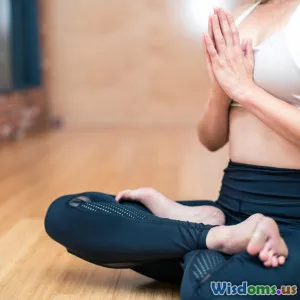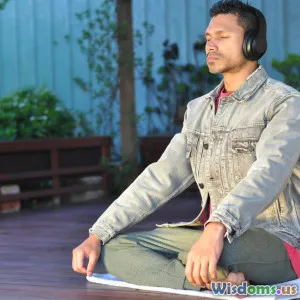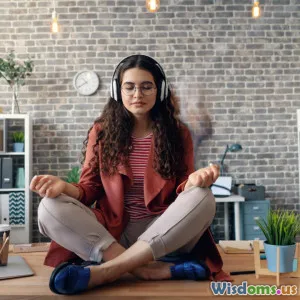
How Ten Minutes of Deep Breathing Transformed My Anxiety Levels
16 min read Discover how just ten minutes of deep breathing each day drastically improved my anxiety and mental well-being. (0 Reviews)
How Ten Minutes of Deep Breathing Transformed My Anxiety Levels
There was a time when my days would begin with a knotted stomach and the persistent tension of anxiety hovering, waiting to multiply at first provocation. Despite work achievements and supportive friends, my mind teetered constantly on the edge. Then, a simple practice dramatically shifted my landscape: ten minutes of mindful deep breathing each day. Here’s how something so accessible and unassuming empowered me to reclaim calmness—and how you can try it, too.
Understanding Anxiety: A Hidden Epidemic

Anxiety is not just nervousness before an interview or the jitters ahead of a big presentation. It is oftentimes chronic and insidious, manifesting as a tight chest, racing heart, irrational worries, or even stomach troubles. According to the World Health Organization, nearly 301 million people globally are living with anxiety disorders as of 2023—a trend that has only risen in the past decade.
Before discovering breathwork, I cycled through various coping efforts: podcasts on positivity, late-night journal entries, rigid exercise schedules. While these brought fleeting relief, nothing curbed the daily, visceral tension. I was simply trying to keep my head above water.
It turns out, what I was missing was a direct intervention for my nervous system. While therapy, medication, and other tools remain invaluable, scientists now increasingly recognize the physiological power of deep breathing to break the pattern of chronic arousal. Stanford neuroscientist Dr. Andrew Huberman has famously said, “Physiological sighs, or deep breathing, are mechanisms embedded in every human for stress control.” It’s not alternative; it’s biological, and it goes deeper than just “taking a deep breath.”
What Is Deep Breathing? Demystifying the Practice

To many, ‘deep breathing’ sounds overly simplistic or vaguely New Age. It was for me—a notion so basic it hardly felt worth pursuing. But the reality is that not all breathing is created equal. Most of us are caught in a cycle of rapid, shallow breaths, which exacerbates anxiety by keeping us in fight-or-flight mode.
Deep breathing involves intentionally drawing full, slower breaths using the diaphragm, expanding the belly and ribcage. Techniques like diaphragmatic breathing, box breathing (inhale-hold-exhale-hold), or the 4-7-8 method (inhale for 4 seconds, hold for 7, exhale for 8) engage the vagus nerve, telling the nervous system: You’re safe.
Scientific studies show that such slow, controlled breathing can:
- Lower heart rate
- Decrease levels of stress hormones like cortisol
- Improve focus and cognitive performance
- Reduce muscle tension and induce calmness
One landmark study in the journal Frontiers in Psychology (2017) found that participants practicing deep breathing for just 15 minutes a day for 8 weeks reported significantly reduced anxiety and better mood compared to controls.
The Turning Point: My First Ten Minutes
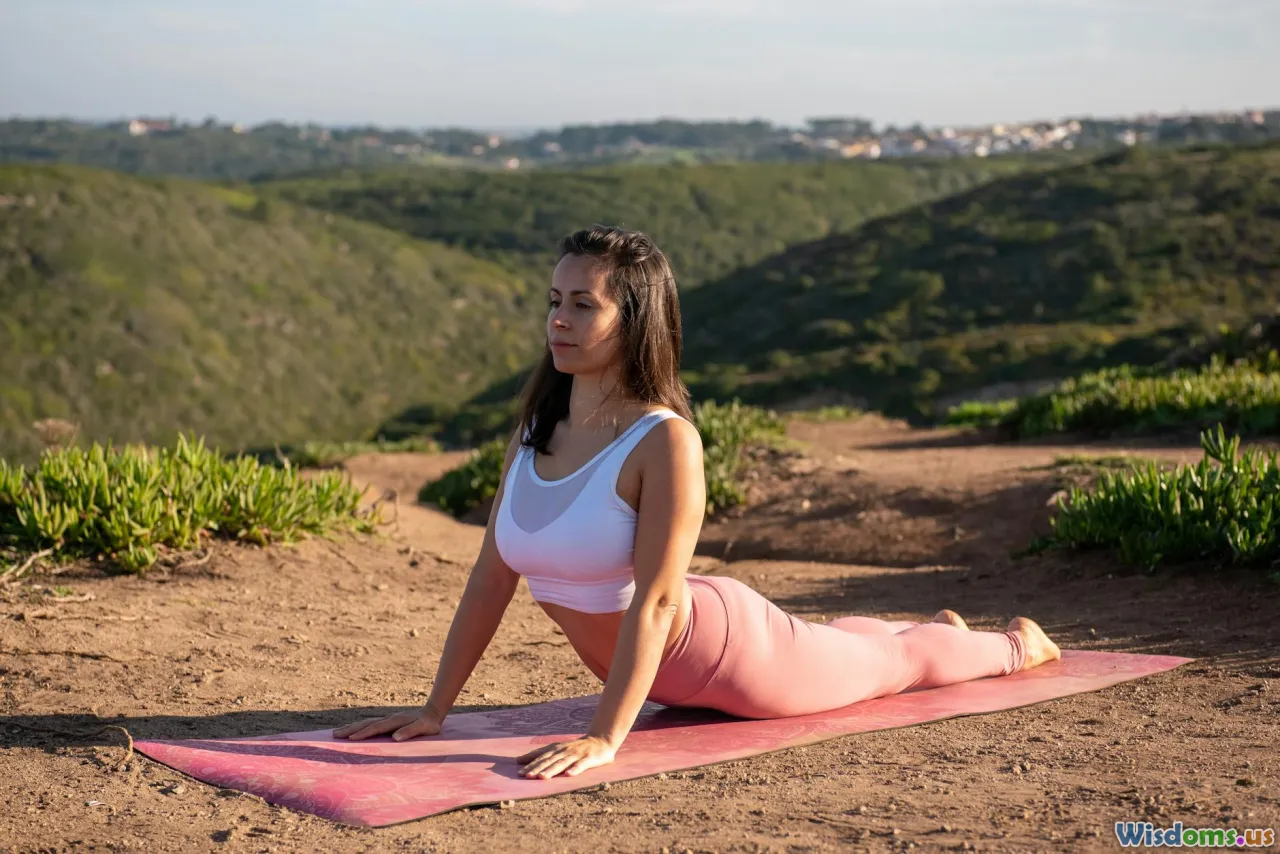
Admittedly, my first attempt felt uneasy—and more than a little awkward. I queued up a guided practice on my phone, set a timer for ten minutes, and tucked myself onto a yoga mat. My mind raced, peppering me with worries even as I inhaled and exhaled deliberately.
Something unexpected happened by minute six: The tightness in my abdomen lessened. By the end, my heart rate had steadied. The relief was subtle, but profound. Perhaps for the first time in many months, I wasn’t waiting for the next anxious thought to pounce.
I began incorporating this practice each morning before breakfast. Consistency emerged as the critical factor: Regular sessions, not occasional attempts, started to recondition my anxiety response. This was not about emptying my mind or achieving perfect serenity—just a gentle, reliable reset. Within a week, even friends commented that my demeanor seemed, in their words, “softer.”
The Science Behind Deep Breathing’s Effect on Anxiety

What actually happens inside the body during deep breathing? Deep, slow breaths switch the body from sympathetic (fight-or-flight) mode to parasympathetic (rest-and-digest) mode, activating the vagus nerve—a crucial messenger between brain, heart, and gut. This modulation reduces anxiety symptoms on multiple fronts:
- Heart Rate Variability (HRV): Studies suggest deep breathing increases HRV, a core indicator of stress resilience and a significant predictor of overall well-being.
- Cortisol Suppression: Deep breathing routines can lower cortisol, the primary stress hormone, dampening the inflammatory processes linked to both anxiety and chronic illness.
- Brain Wave Changes: Research using EEG scans has found deep breathing increases alpha brain waves (associated with relaxed alertness) and decreases beta waves (linked with active, anxious cognition).
- Neuroplasticity: There’s emerging evidence that regular breathwork rewires neural circuits, allowing new, calmer responses to stressors.
For example, in a 2021 meta-analysis published in the International Journal of Environmental Research and Public Health, scientists reviewed over 20 studies and concluded that slow, deep breathing interventions “significantly reduced self-reported anxiety and physiological arousal in both clinical and non-clinical populations.”
Creating a Daily Deep Breathing Ritual

The beauty of deep breathing is its portability—no equipment, no expense, just the discipline to show up daily. Building my ritual took experimentation and honesty about what fit into my chaotic mornings. Here’s a practical roadmap for integrating deep breathing into your routine:
- Designate a Consistent Time: Most people find mornings ideal; before the storm of emails, meetings, or parenting begins.
- Set Up a Comfortable Space: A cushion, mat, or chair in a spot you love, ideally with natural light.
- Choose a Technique: If you’re new, I recommend ‘box breathing’—inhale for four counts, hold for four, exhale for four, hold for four; repeat.
- Use a Timer or App: Countdown timers or apps such as ‘Breathwrk,’ ‘Calm,’ or even YouTube meditations help, but your smartphone’s built-in timer suffices.
- Start Small and Scale Up: Even three minutes daily can help; increase duration as comfort grows.
- Track Your Progress: Journaling how you feel before and after each session transforms subjective improvements into observable trends.
I also discovered that gentle reminders—like a sticky note by my coffee mug or a recurring calendar event—increased my consistency. At first, it felt inconvenient to carve out ten minutes. After a month, it felt indispensable.
Real-Life Benefits: Subtle and Sweeping Changes

Transformational effects don’t always announce themselves with fanfare. More often, they reveal their presence in the background drapery of daily life. Within weeks, I noticed:
- Sleep Unbroken: Nights previously punctuated by worry became progressively sounder. I fell asleep faster and woke up more rested.
- Emotional Regulation: Where I would snap in response to ordinary irritations, I now found pause—a window where I could choose my response rather than react impulsively.
- Focus and Productivity: The fog of nervous distraction dissipated, replaced with longer spells of calm, creative work.
- Improved Relationships: I listened more attentively, no longer lost in the static of my internal anxiety.
A close friend with whom I shared this practice reported fewer panic attacks and less reliance on anti-anxiety medication after adjunctive breathwork. My partner, initially skeptical, now practices alongside me, finding it especially helpful before high-stakes meetings.
Overcoming Obstacles and Setbacks
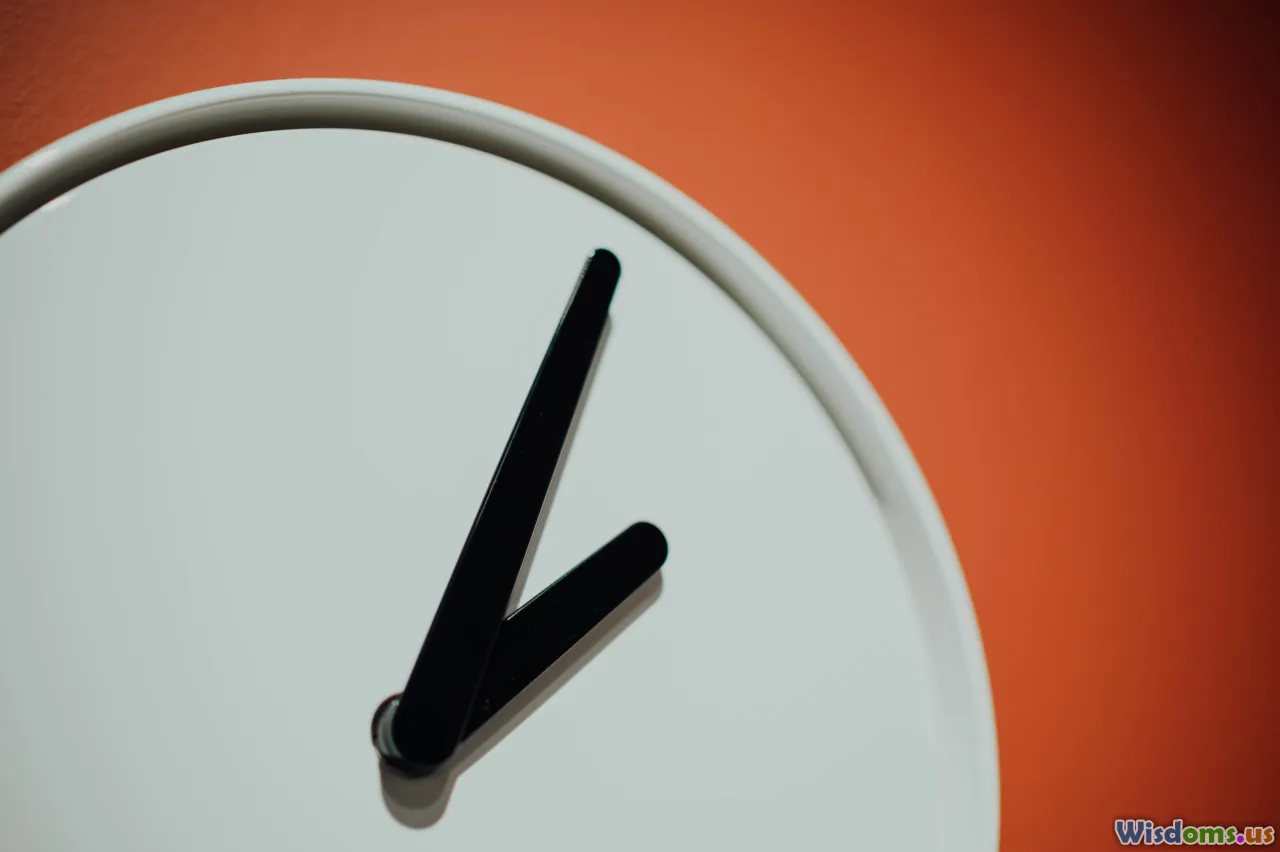
Like all habits, deep breathing’s potency is matched by the resistance it can trigger. Some common hurdles surfaced in my journey, along with ways I learned to move past them:
- Restlessness: Early sessions were punctuated with monkey mind syndrome. I gently redirected my focus to counting each breath or the sensation in my nostrils.
- Impatience: Results may be incremental. I reframed the practice as ‘maintenance for my mind’—like brushing teeth, invisible benefits accrue with repetition.
- Distractions: Family noise, pings of my phone, work emails. Preemptively silencing devices, requesting privacy, or donning headphones for soft music worked wonders.
- Skipping Days: Life intervenes. I learned to forgive missed sessions and simply restarted the next day, rather than abandoning the practice.
The research underscores that ‘dose consistency’ matters more than perfection. Even if a session gets cut short, what counts is showing up and training the nervous system.
Quick Tips for Maximizing Your Practice

Drawing from experience and science, here are actionable ideas to sculpt your own deep breathing journey:
- Combine with Aromatherapy: Scents like lavender, bergamot, or cedarwood can enhance relaxation during your sessions.
- Leverage Biofeedback: Devices like the ‘Muse’ headband or ‘HeartMath’ monitor can turn real-time heart rate or brainwave feedback into a gamified meditation experience.
- Anchor the Practice: ‘Habit stacking’ is powerful; link deep breathing to a daily activity like tooth brushing or pouring coffee.
- Incorporate Movement: Gentle stretching or yoga before breathwork releases residual tension, amplifying the effects.
- Connect in Community: Invite friends, partners, or colleagues to participate. Shared practice can boost motivation and accountability.
Remember: Deep breathing’s goal is not a performance—there’s no perfect breath, only presence. On tough days, even a few focused breaths can interrupt anxiety’s momentum.
If You’re Skeptical—You’re Not Alone

I was resistant at first, convinced that such a modest technique could do little against years of tightly wound anxiety. Yet time and science are on its side. Deep breathing is not a replacement for therapy or professional support, but it is a low-risk, high-benefit adjunct that costs nothing and can be practiced anywhere.
Studies from institutions like Harvard Medical School and UC San Francisco repeatedly demonstrate that even brief periods of mindful breathwork measurably reduce anxiety and improve subjective well-being. Best of all, it returns mastery to the individual—a way for each of us to interface directly with our own mental state.
Final Reflections: The Power of Ten Quiet Minutes
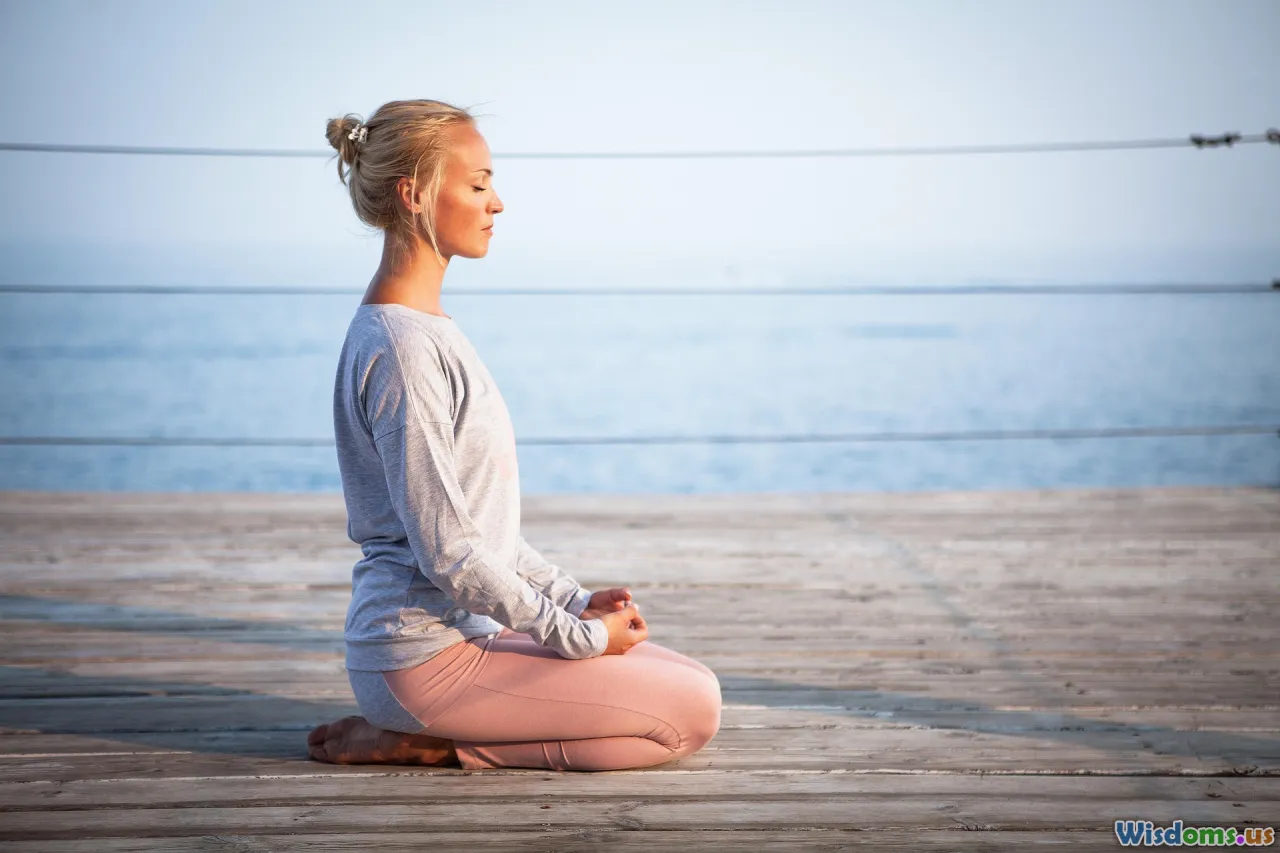
In a culture that prizes busyness and external solutions, the idea that it’s possible to meaningfully reduce anxiety through ten minutes of conscious breathing each day may be revolutionary. For me, this pocket of stillness is a daily investment in peace—a steadfast ritual that protects my mental terrain from the constant storms of life.
You don’t need exotic retreats or expensive tools. All you need is the willingness to try—ten minutes at a time. Whether your anxiety is a whisper or a roar, consider, as I did, how a few mindful breaths could remake the shape of your day. Sometimes, transformation isn’t loud; sometimes, it arrives in the gentle, steady rhythm of your own breathing.
Rate the Post
User Reviews
Popular Posts











